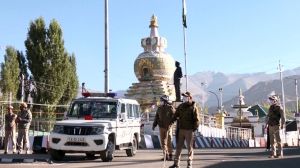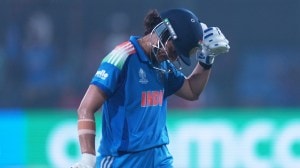CMIE too pares GDP growth forecast to 5.8 pc
MUMBAI, OCT 11: Close on the heels of the Reserve Bank of India's (RBI) scaling down of growth estimates on Tuesday, independent economic ...

MUMBAI, OCT 11: Close on the heels of the Reserve Bank of India’s (RBI) scaling down of growth estimates on Tuesday, independent economic think-tank the Centre for Monitoring Indian Economy (CMIE) also cut its 2000/01 (April-March) gross domestic product (GDP) growth estimate on Wednesday to 5.8 per cent from an earlier forecast of 7.0 per cent following an unusually dry monsoon spell and steep hike in petroleum prices in September.
CMIE also cut its estimates for 2000/01 agricultural sector growth to 1.5 per cent from 4.5, industrial sector growth to 5.9 per cent from 7.5 and services sector growth to 8.1 per cent from 8.5. A poor spell of rains in September had dashed hopes of recovery in the farm sector from the poor growth in the previous year and this was in turn expected to affect the industrial sector, CMIE said.
The RBI said in its mid-year credit and monetary policy review that it had pared its estimate of 2000/01 real GDP growth to 6.0-6.5 per cent from the forecast of 6.5 percent made in its annual report released in August. Both the CMIE and RBI cited poor economic growth in the first quarter of the current fiscal year as factors behind their revisions. GDP grew 5.8 per cent in April-June 2000 compared with 6.9 percent in the year-ago quarter.
Inflation was expected to rise to eight per cent in terms of wholesale price index (WPI) and to seven per cent in terms of consumer price index (CPI), CMIE said in its monthly review of the Indian Economy. The current rise in prices of petroleum products would lead to a 1.3 percentage points increase in WPI, it added.
The dry monsoon spell had marred prospects of a recovery in the agricultural sector during the current year. This year, CMIE estimates the agricultural output to be limited to 1.3 per cent as against the earlier expectation of 4.2 per cent growth. The previous year had seen a nearly two per cent fall in agricultural output.
The September dry spell had adversely affected oilseeds, rice and sugarcane. The decline in consumption demand following poor rains and steep hike in petroleum prices would limit industrial growth to less than six per cent as against seven per cent rise forecast earlier.
CMIE pointed out that prices of petroleum products had increased by 66 per cent in the last 12 months and chemicals, transport and cement were the worst affected sectors. Investment continues to remain extremely sluggish, CMIE said, adding, given the slowdown in consumption demand, it was unlikely that investments would pick up in the near future.
The services sector, which had been the only one to maintain steady and impressive growth in the recent years, slowed down during the first quarter of the current year. Growth in this sector was only 7.7 per cent compared to 8.6 per cent in the corresponding quarter a year ago.
Although exports growth has been impressive, the balance of payments was under pressure. The current account deficit was expected to double to US dollar eight billion as against $ four billion in the preceding year, largely on account of the steep hike in the crude oil oil import bill. capital flows would cover only $ six billion of the deficit, CMIE said.
Indian financial markets, already weighed down by other bad news such as continuing uncertainty over global oil prices and a revision in a ratings outlook by Standard & Poor’s (S&P), fell further after the CMIE forecasts. The Indian rupee, which had opened weak following a downward revision of the country’s long-term foreign currency issuer rating outlook by S&P, also dipped.





- 01
- 02
- 03
- 04
- 05


























